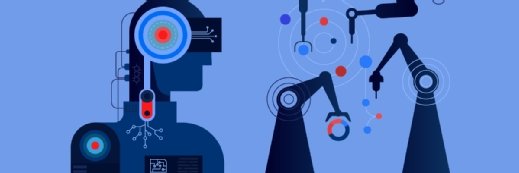
Nobi_Prizue/istock via Getty Ima
Artificial Intelligence Tool Diagnoses Alzheimer’s with 95% Accuracy
The algorithm can detect subtle differences in the way people with Alzheimer’s disease use language.
A team from Stevens Institute of Technology has developed an artificial intelligence tool that can diagnose Alzheimer’s disease with more than 95 percent accuracy, eliminating the need for expensive scans or in-person testing.
In addition, the algorithm is also able to explain its conclusions, enabling human experts to check the accuracy of its diagnosis.
Alzheimer’s disease can impact a person’s use of language, the researchers noted. For example, people with Alzheimer’s tend to replace nouns with pronouns, and they can express themselves in a very roundabout, awkward way.
The team designed an explainable AI tool that uses attention mechanisms and a convolutional neural network to accurately identify well-known signs of Alzheimer’s, as well as subtle linguistic patterns that were previously overlooked.
Researchers trained the algorithm using texts composed by both healthy subjects and known Alzheimer’s sufferers describing a drawing of children stealing cookies from a jar. The team converted each individual sentence into a unique numerical sequence, or vector, representing a specific point in a 512-dimensional space.
This kind of approach allows even complex sentences to be assigned a concrete numerical value, making it easier to analyze structural and thematic relationships between sentences.
Using those vectors along with handcrafted features, the AI gradually learned to spot differences between sentences composed by healthy or unhealthy individuals, and was able to determine with significant accuracy how likely any given text was to have been produced by a person with Alzheimer’s.
“This is a real breakthrough,” said the tool’s creator, K.P. Subbalakshmi, founding director of Stevens Institute of Artificial Intelligence and professor of electrical and computer engineering at the Charles V. Schaefer School of Engineering & Science.
“We’re opening an exciting new field of research, and making it far easier to explain to patients why the AI came to the conclusion that it did, while diagnosing patients. This addresses the important question of trustability of AI systems in the medical field.”
The AI system can also incorporate new criteria that may be identified by other research teams in the future, making the algorithm increasingly more accurate over time.
“We designed our system to be both modular and transparent,” Subbalakshmi explained. “If other researchers identify new markers of Alzheimer’s, we can simply plug those into our architecture to generate even better results.”
In the future, AI tools may be able to diagnose Alzheimer’s using any text, from emails to social media posts. However, to develop such an algorithm, researchers would need to train it on many different kinds of texts produced by known Alzheimer’s sufferers instead of just picture descriptions.
While this kind of data is not yet available, increasing access to this kind of information could lead to the development of accurate, comprehensive AI tools.
“The algorithm itself is incredibly powerful,” Subbalakshmi said. “We’re only constrained by the data available to us.”
The researchers’ next steps will be gathering new data that will help the algorithm diagnose patients with Alzheimer’s disease based on speech in languages other than English. The team is also uncovering ways in which other neurological conditions, such as aphasia, stroke, traumatic brain injuries, and depression, can impact language use.
“This method is definitely generalizable to other diseases,” said Subbalakshmi. “As we acquire more and better data, we’ll be able to create streamlined, accurate diagnostic tools for many other illnesses too.”
Researchers expect that providers can use this AI tool to more accurately diagnose Alzheimer’s, leading to earlier treatment and reduced healthcare costs.
“This is absolutely state-of-the-art,” said Subbalakshmi. “Our AI software is the most accurate diagnostic tool currently available while also being explainable.”




